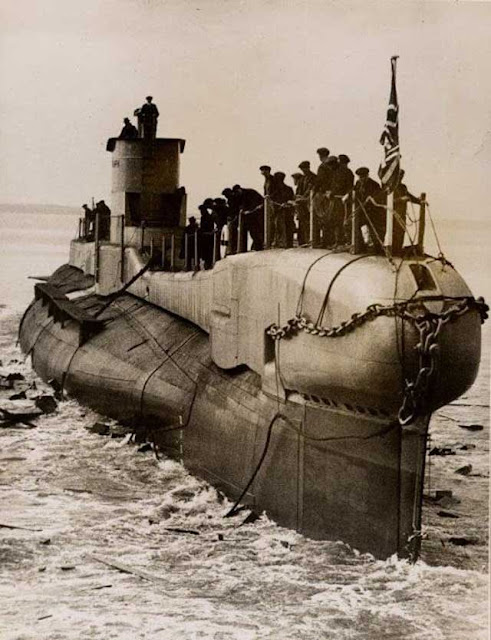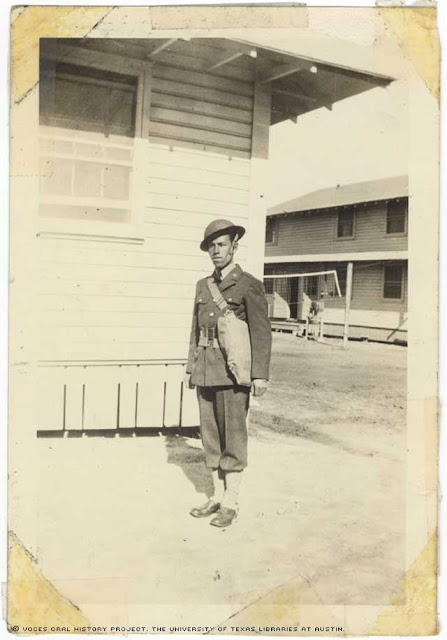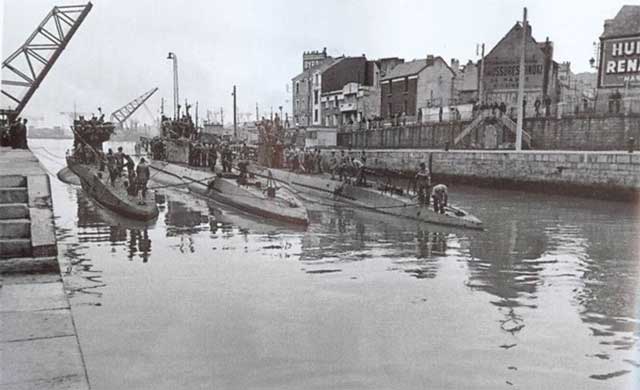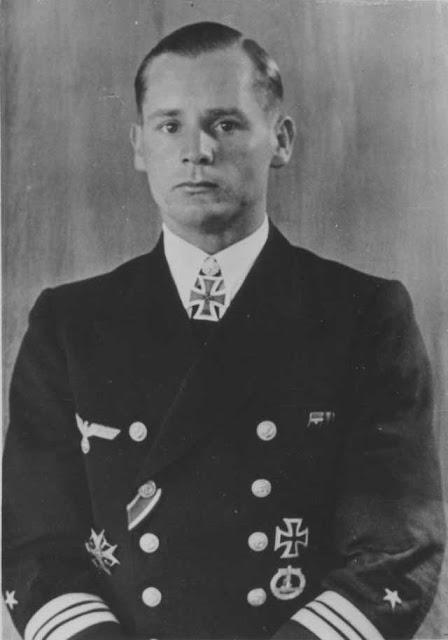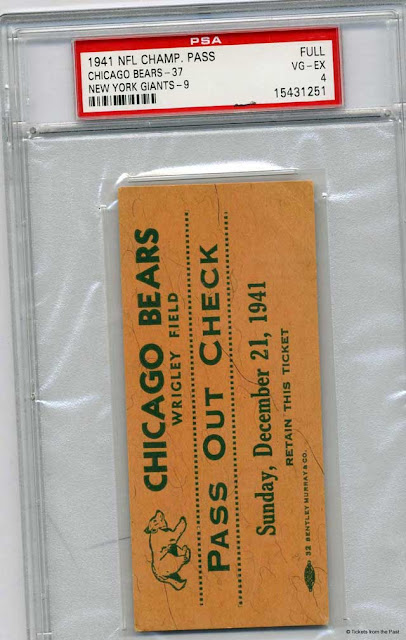Friday 26 December 1941
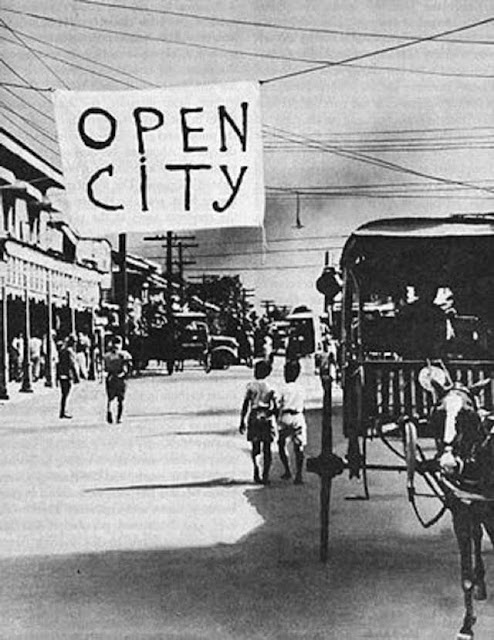 |
| Manila, Philippines is declared an open city 26 Dec 1941 (US Army Center of Military History). |
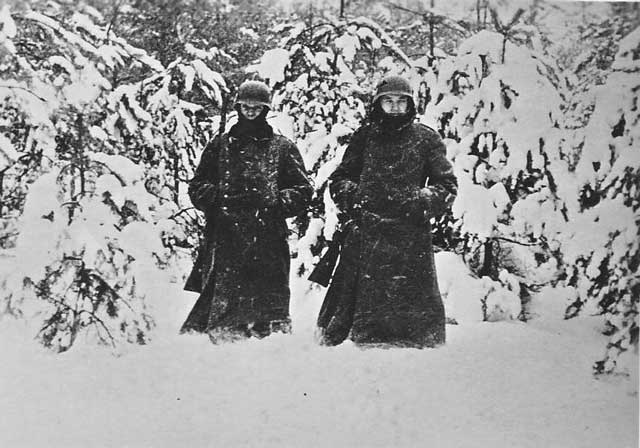 |
| German soldiers west of Moscow, December 1941 (original via Wikipedia and Creative Commons). |
 |
| Soviet troops retaking Naro-Fominsk southwest of Moscow ca. 26 December 1941. |
 |
| "USS Tangier (AV-8) (R) unloads supplies at Midway, 26 December 1941; USS RALPH TALBOT (DD-390) and USS BLUE (DD-387) are at left; TAMAHA (YN-440) is in the background, center. TANGIER had originally been earmarked for the Wake Island relief expedition." Naval History and Heritage Command. |
On Borneo, the Japanese consolidate their position at Kuching. Dutch B-10s operating out of Samarinda attack Japanese shipping and sink a collier and a minesweeper. On land, the 2nd Battalion, 15th Punjab Regiment continues retreating into the interior.
The Tulsa Incident continues in Rangoon. US Army Air Force Major General George Brett, the senior United States officer in Burma, has control over all Lend-Lease affairs, though the War Department intends that more for negotiating purposes than for actual control over the material goods. With the Japanese advancing into Burma, Brett is determined to divert Lend-Lease supplies from their intended destination in China to the British. He is abetted in this by British determination to seize the supplies, and Governor Reginald Dorman-Smith considers the military situation to be grave enough to seize them. U.S. Lieutenant Colonel Joseph J. Twitty, who actually is in charge of the Lend-Lease goods, also believes that the British need the supplies and that they cannot make it to China anyway. The British troops in Rangoon have moved all of the freighter Tulsa's cargo to a warehouse a dozen miles away from the docks even though technically they are "owned" by the Chinese. The Chinese are furious. The situation now has dragged on for over a week now and poses a growing threat to Allied relations. A Christmas day conference between representatives of the three governments turned explosive, with Chinese Generalissimo Chiang Kai-shek threatening to withdraw all Chinese troops from Burma. Today, the Americans reassure Chiang Kai-shek that it is not the policy of the Americans to divert Lend-Lease goods while en route and they still are intended for China. This smooths things over for the moment, but the British remain committed to retaining the cargo.
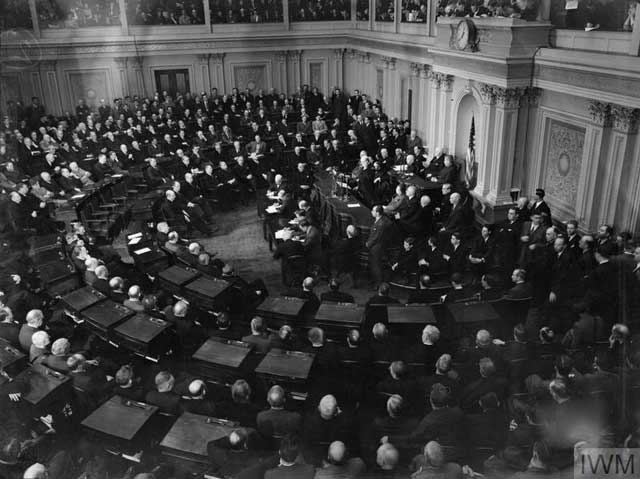 |
| Winston Churchill addresses a joint session of Congress in Washington, D.C., on 26 December 1941 © IWM (A 7187). |
Anglo/US Relations: British Prime Minister Winston Churchill, in Washington for the Arcadia Conference, addresses a joint session of the U.S. Congress. He warns that "many disappointments and unpleasant surprises await us" and that the war will last at least another 18 months.
 |
| Robertson Stadium under construction in Houston on the campus of the University of Houston, 26 December 1941 (Photography by Elwood Payne, Construction by Fretz Construction Company). |
American Homefront: Lieutenant General John DeWitt, Commanding General Fourth Army and Commanding General Western Defense Command, is encountering widespread sentiment in southern California to intern all Japanese-Americans. He tells the Provost General in Washington, D.C. that the Los Angeles Chamber of Commerce now supports the move. However, DeWitt personally is against the move because he considers many citizens of Japanese descent to be loyal Americans.
 |
| Winston Churchill addressing Congress, 26 December 1941. |
December 1941
December 1, 1941: Hitler Fires von Rundstedt
December 2, 1941: Climb Mount Niitaka
December 3, 1941: Hints of Trouble in the Pacific
December 4, 1941: Soviets Plan Counteroffensive
December 5, 1941: Soviets Counterattack at Kalinin
December 6, 1941: Soviet Counterattack at Moscow Broadens
December 7, 1941: Japan Attacks Pearl Harbor
December 8, 1941: US Enters World War II
December 9, 1941: German Retreat At Moscow
December 10, 1941: HMS Prince of Wales and Repulse Sunk
December 11, 1941: Hitler Declares War on US
December 12, 1941: Japanese in Burma
December 13, 1941: Battle of Cape Bon
December 14, 1941: Hitler Forbids Withdrawals
December 15, 1941: The Liepaja Massacre
December 16, 1941: Japan Invades Borneo
December 17, 1941: US Military Shakeup
December 18, 1941: Hitler Lays Down the Law
December 19, 1941: Brauchitsch Goes Home
December 20, 1941: Flying Tigers in Action
December 21, 1941: The Bogdanovka Massacre
December 22, 1941: Major Japanese Landings North of Manila
December 23, 1941: Wake Island Falls to Japan
December 24, 1941: Atrocities in Hong Kong
December 25, 1941: Japan Takes Hong Kong
December 26, 1941: Soviets Land in the Crimea
December 27, 1941: Commandos Raid Norway
December 28, 1941: Operation Anthropoid Begins
December 29, 1941: Soviet Landings at Feodosia
December 30, 1941: Race for Bataan
December 31, 1941: Nimitz in Charge
2020



